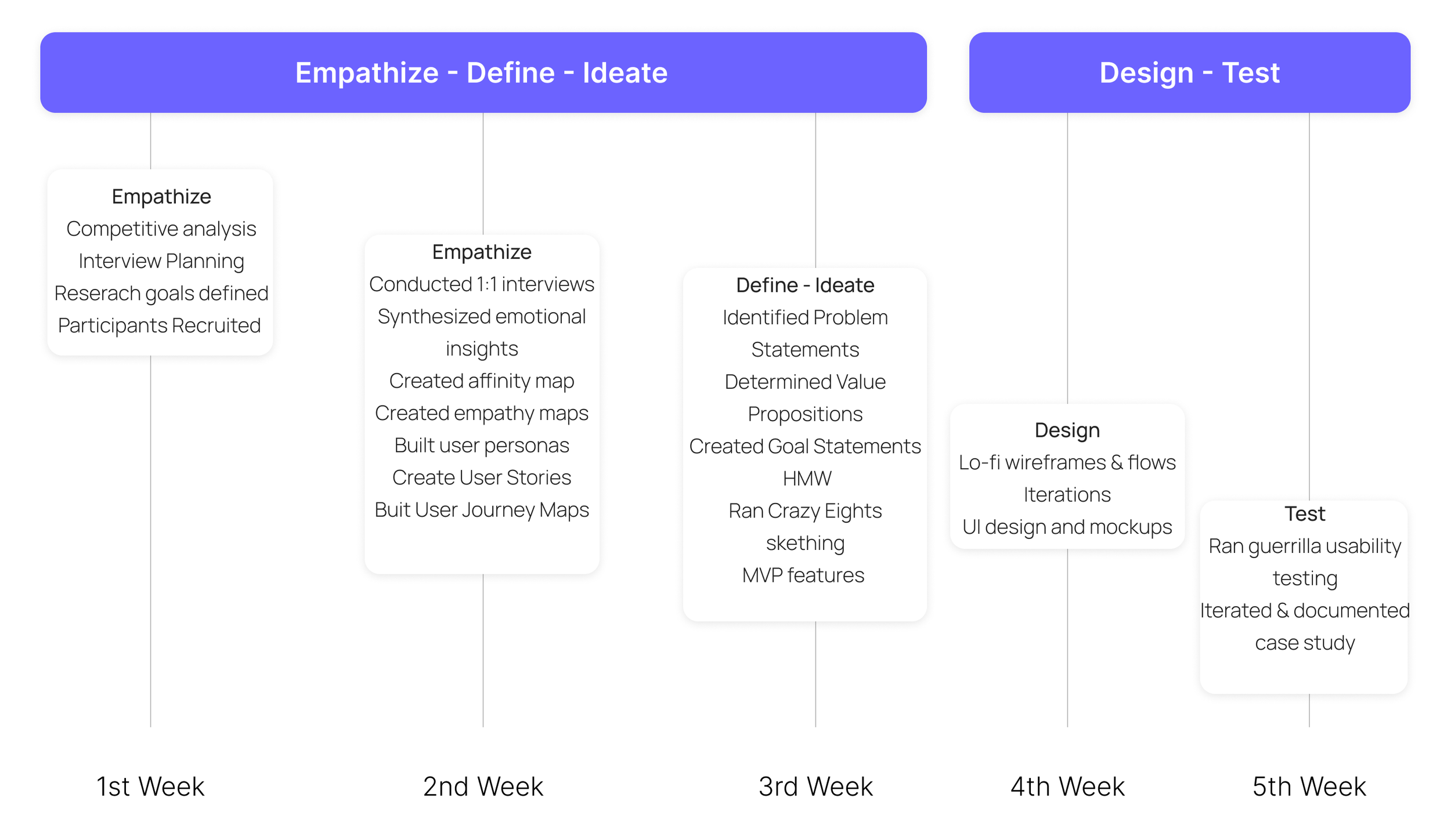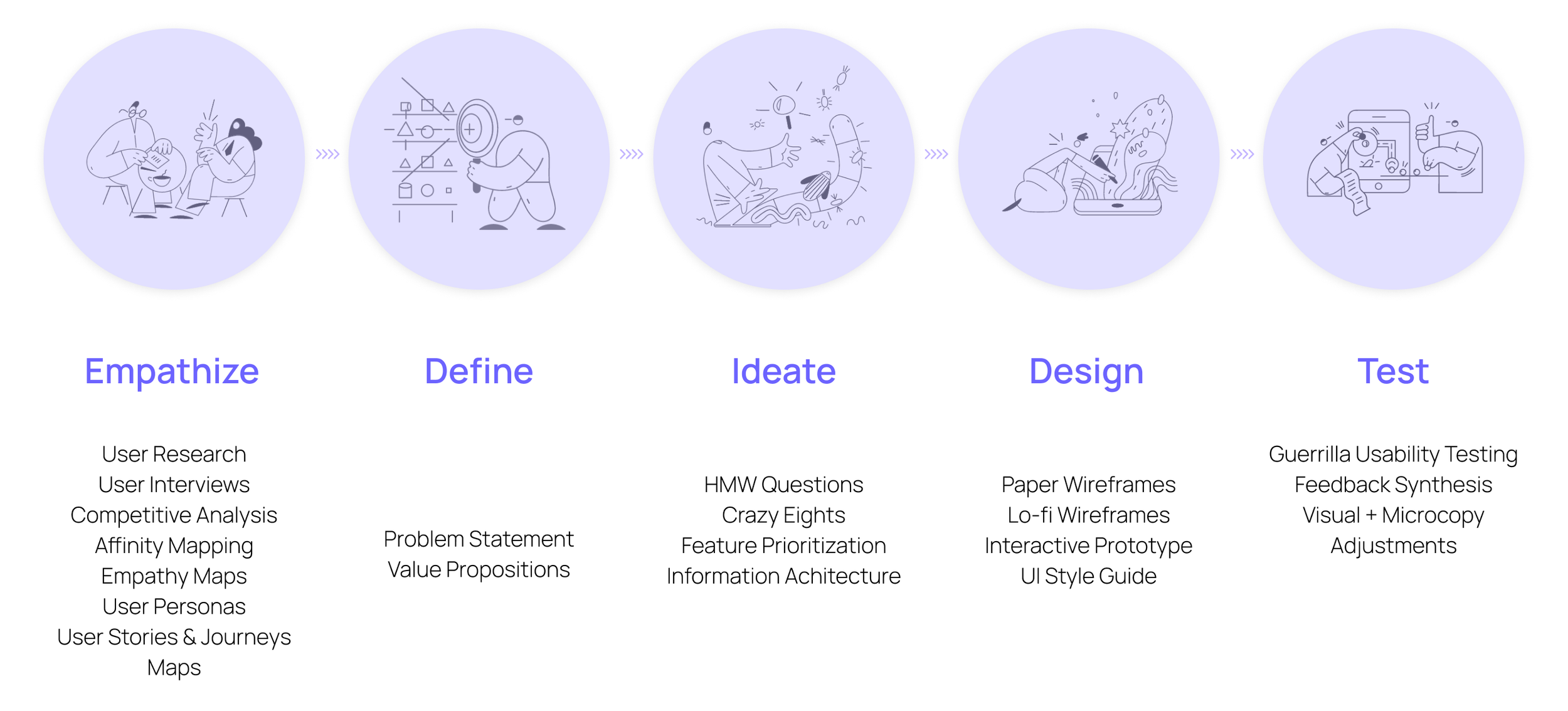DREAMY
In 2025, dream journaling took a new shape with the introduction of Dreamy, a guided, privacy-first companion for capturing and reflecting on dreams. This is the story of how I made dream work more accessible, intuitive, and therapy-ready.
I led Dreamy end-to-end as a solo UX/UI designer: from research and problem framing to a dark, accessible design system and a hi-fi prototype in Figma. This is the story of how I shaped a calm, low-friction experience for the first minute of the day.

Meet Your New Dream Companion
Dreamy is your companion for capturing the in-between: it turns hazy, half-awake memories into meaningful reflections. With guided morning prompts, subtle micro-interactions, and mood tagging, the flow keeps friction low and emotion high: transforming fragments into structured, searchable entries you can revisit or securely export to therapy.
Let’s dive into the process behind Dreamy—the decisions, iterations, and tests that brought this experience to life.
Or scroll for the quick brief
MY ROLE
I led end-to-end UX design for Dreamy: setting the design strategy and framing the problem; conducting user research and a competitive audit; translating insights into personas, empathy maps, information architecture, and user flows; producing wireframes and interactive prototypes; building a dark, accessible design system; and planning and running usability tests to iterate the experience into a low-friction, therapy-ready product.
TOOLS
THE CHALLANGE
People often wake from emotionally intense dreams determined to capture them, yet memory and mood fade within minutes. In that fragile, half-awake window, most apps are cognitively demanding, overly structured, or emotionally flat. This gap between intention and tooling leads to missed reflection, inconsistent journaling habits, and reduced emotional processing: leaving people frustrated and disconnected from their inner experience.
Create a first-minute flow that’s effortless, low-cognition, and emotionally supportive, safe to keep private and simple to share in therapy when needed.
DESIGN CHALLANGE
TIMELINE
I brought Dreamy from insight to interface in a 5-week solo sprint, moving deliberately through research, definition, prototyping, testing, and UI polish.
PROPOSED SOLUTION
Dreamy delivers a first-minute, low-cognition capture flow that turns fleeting, half-awake fragments into meaningful entries, safe by default, shareable by choice. Guided morning prompts, one-tap record (voice or quick text), mood chips, and a “Save as draft?” safety net reduce friction exactly when recall is most fragile. A clear privacy model (e.g., Mark as Sensitive) and explicit export confirmation support therapy workflows without anxiety. The dark, accessible UI keeps focus on content and emotion, not settings.
THE APPROACH
Dreamy was shaped around moments of cognitive fog, emotional vulnerability, and sensory overload that often follow waking from a dream. The goal was to create a journaling space that feels calm, intuitive, and emotionally validating.
My approach prioritized: low cognitive load over structure, emotional resonance over productivity metrics, sensory minimalism over UI clutter
Every interaction, from voice input to mood tagging, was designed to lower friction and support users in forming gentle, consistent habits of reflection.
TARGET AUDIENCE
The Anxious Dreamer: seeks emotional release after unsettling dreams
The Reflective Thinker: wants to identify patterns, behaviors, or triggers
The Quiet Creative: explores dreams for symbolic inspiration or storytelling
WHAT SUCCESS MEANS?
Start recording in ≤5s with <2 decisions before capture
Clear, single notifications model + optional Weekly Summary
Transparent privacy states (Mark as Sensitive) and explicit export confirmation
Dark, accessible UI that protects focus in low light
DESIGN THINKING PROCESS
For Dreamy, I followed a flexible version of the classic Design Thinking framework, tailored to support emotional insights, qualitative research, and fast solo iteration. Rather than rushing into solutions, I spent time understanding the emotional state, cognitive limitations, and morning routines of users waking from dreams. Each phase, from empathizing with users to testing interactive prototypes, was designed to reduce friction, support gentle reflection, and transform journaling into a calming, emotionally validating experience.





